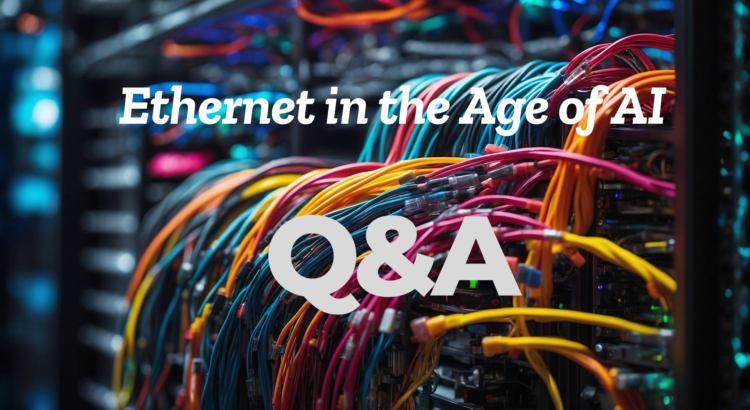AI is having a transformative impact on networking. It’s a topic that the SNIA Data, Storage & Networking Community covered in our live webinar, “Ethernet in the Age of AI: Adapting to New Networking Challenges.” The presentation explored various use cases of AI, the nature of traffic for different workloads, the network impact of these workloads, and how Ethernet is evolving to meet these demands. The webinar audience was highly engaged and asked many interesting questions. Here are the answers to them all.
Q. What is the biggest challenge when designing and operating an AI Scale out fabric?
A. The biggest challenge in designing and operating an AI scale-out fabric is achieving low latency and high bandwidth at scale. AI workloads, like training large neural networks, demand rapid, synchronized data transfers between thousands of GPUs or accelerators. This requires specialized interconnects, such as RDMA, InfiniBand, or NVLink, and optimized topologies like fat-tree or dragonfly to minimize communication delays and bottlenecks.
Balancing scalability with performance is critical; as the system grows, maintaining consistent throughput and minimizing congestion becomes increasingly complex. Additionally, ensuring fault tolerance, power efficiency, and compatibility with rapidly evolving AI workloads adds to the operational challenges.
Unlike standard data center networks, AI fabrics handle intensive east-west traffic patterns that require purpose-built infrastructure. Effective software integration for scheduling and load balancing is equally essential. The need to align performance, cost, and reliability makes designing and managing an AI scale-out fabric a multifaceted and demanding task.
Q. What are the most common misconceptions about AI scale-out fabrics? Read More
